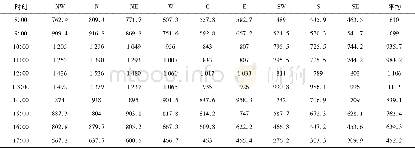《Table 1–Study of photoreactivation under different light conditions.》
 提示:宽带有限、当前游客访问压缩模式
提示:宽带有限、当前游客访问压缩模式
本系列图表出处文件名:随高清版一同展现
《Visible-light-driven photocatalytic inactivation of bacteriophage f2 by Cu-TiO_2 nanofibers in the presence of humic acid》
A large number of studies have reported that there is a type of reactivation enzyme in E.coli,which can repair damaged DNAafter the E.coli is deactivated by UV irradiation,thereby restoring the activity of the bacteria.This phenomenon is called photoreactivation(Li et al.,2017).Because of the existence of photoreactivation,traditional UV disinfection technology faces great risks to microbial safety.Therefore,in order to investigate the reliability of the photocatalytic antiviral technique,it is necessary to determine whether photoreactivation takes place in our experimental system.As shown in Table 1,in the absence of HA,bacteriophage f2 was completely deactivated after 2 hr,and then the reaction solution was placed under different light conditions.The virus concentration was still 0 PFU/mL after 2 hr and 4 hr.Similarly,in the presence of HA,the virus concentration remained at the magnitude of 104PFU/mL.Therefore,it could be concluded that the phenomenon of photoreactivation did not occur in this photocatalytic antiviral system.This might be because bacteriophage f2 itself does not possess a reactivation enzyme like E.coli.Generally,photocatalytic disinfection by Cu-TiO2could deactivate bacteriophage f2 rapidly without photoreactivation,exhibiting low microbial risk and relatively high reliability.
| 图表编号 | XD0033522900 严禁用于非法目的 |
|---|---|
| 绘制时间 | 2019.03.15 |
| 作者 | Rong Cheng、Mi Kang、Zhi-peng Shen、Lei Shi、Xiang Zheng |
| 绘制单位 | School of Environment & Natural Resources, Renmin University of China、School of Environment & Natural Resources, Renmin University of China、School of Environment & Natural Resources, Renmin University of China、School of Environment & Natural Resources, Re |
| 更多格式 | 高清、无水印(增值服务) |





